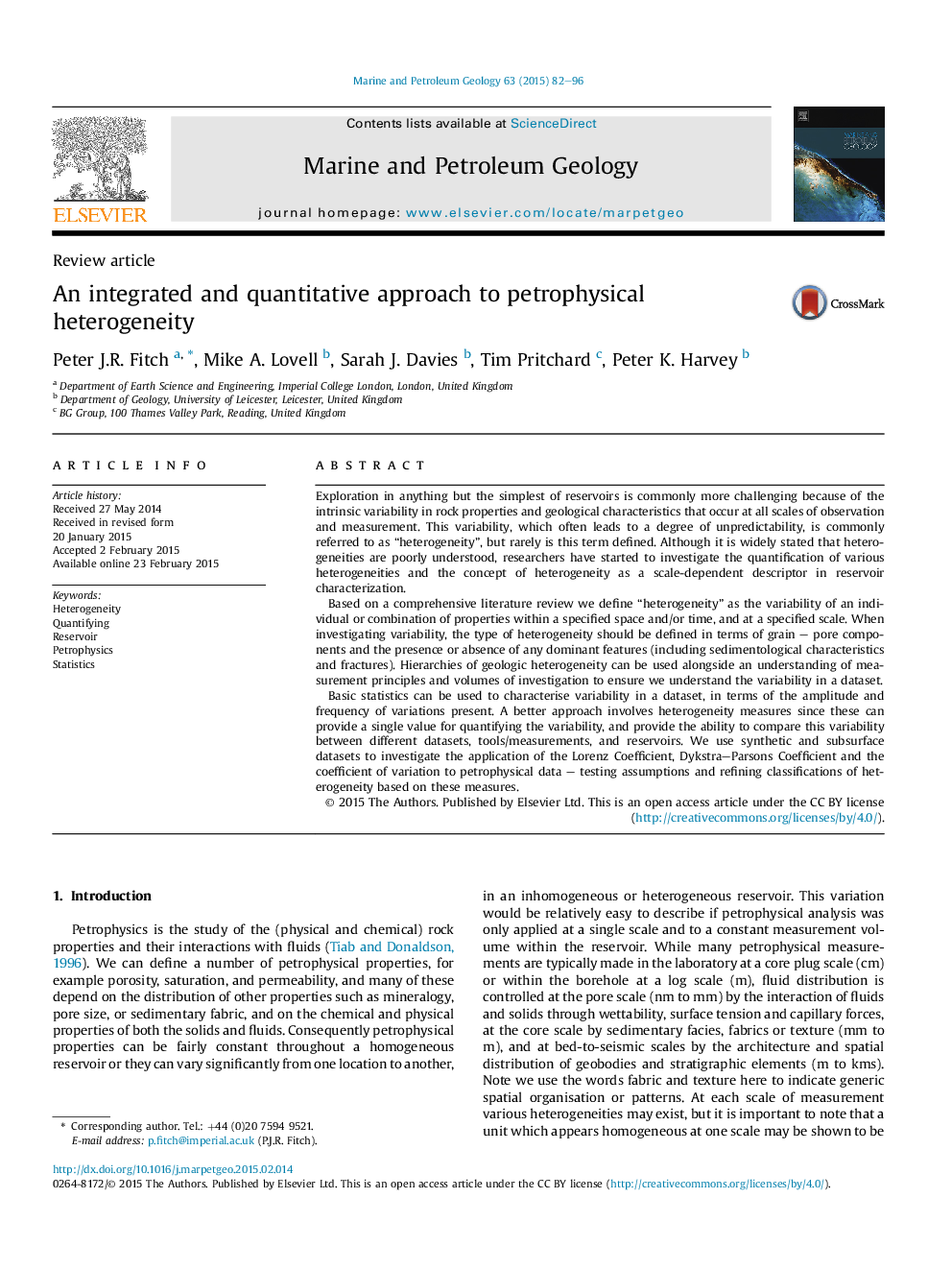| کد مقاله | کد نشریه | سال انتشار | مقاله انگلیسی | نسخه تمام متن |
|---|---|---|---|---|
| 6435194 | 1637162 | 2015 | 15 صفحه PDF | دانلود رایگان |
- We explore how the term heterogeneity can be defined in earth sciences.
- We show that standard statistics can be used to characterise the variability in a dataset.
- We investigate the main controls on three static heterogeneity measures.
- Four case studies illustrate the application of heterogeneity measures to different data types.
Exploration in anything but the simplest of reservoirs is commonly more challenging because of the intrinsic variability in rock properties and geological characteristics that occur at all scales of observation and measurement. This variability, which often leads to a degree of unpredictability, is commonly referred to as “heterogeneity”, but rarely is this term defined. Although it is widely stated that heterogeneities are poorly understood, researchers have started to investigate the quantification of various heterogeneities and the concept of heterogeneity as a scale-dependent descriptor in reservoir characterization.Based on a comprehensive literature review we define “heterogeneity” as the variability of an individual or combination of properties within a specified space and/or time, and at a specified scale. When investigating variability, the type of heterogeneity should be defined in terms of grain - pore components and the presence or absence of any dominant features (including sedimentological characteristics and fractures). Hierarchies of geologic heterogeneity can be used alongside an understanding of measurement principles and volumes of investigation to ensure we understand the variability in a dataset.Basic statistics can be used to characterise variability in a dataset, in terms of the amplitude and frequency of variations present. A better approach involves heterogeneity measures since these can provide a single value for quantifying the variability, and provide the ability to compare this variability between different datasets, tools/measurements, and reservoirs. We use synthetic and subsurface datasets to investigate the application of the Lorenz Coefficient, Dykstra-Parsons Coefficient and the coefficient of variation to petrophysical data - testing assumptions and refining classifications of heterogeneity based on these measures.
Journal: Marine and Petroleum Geology - Volume 63, May 2015, Pages 82-96
